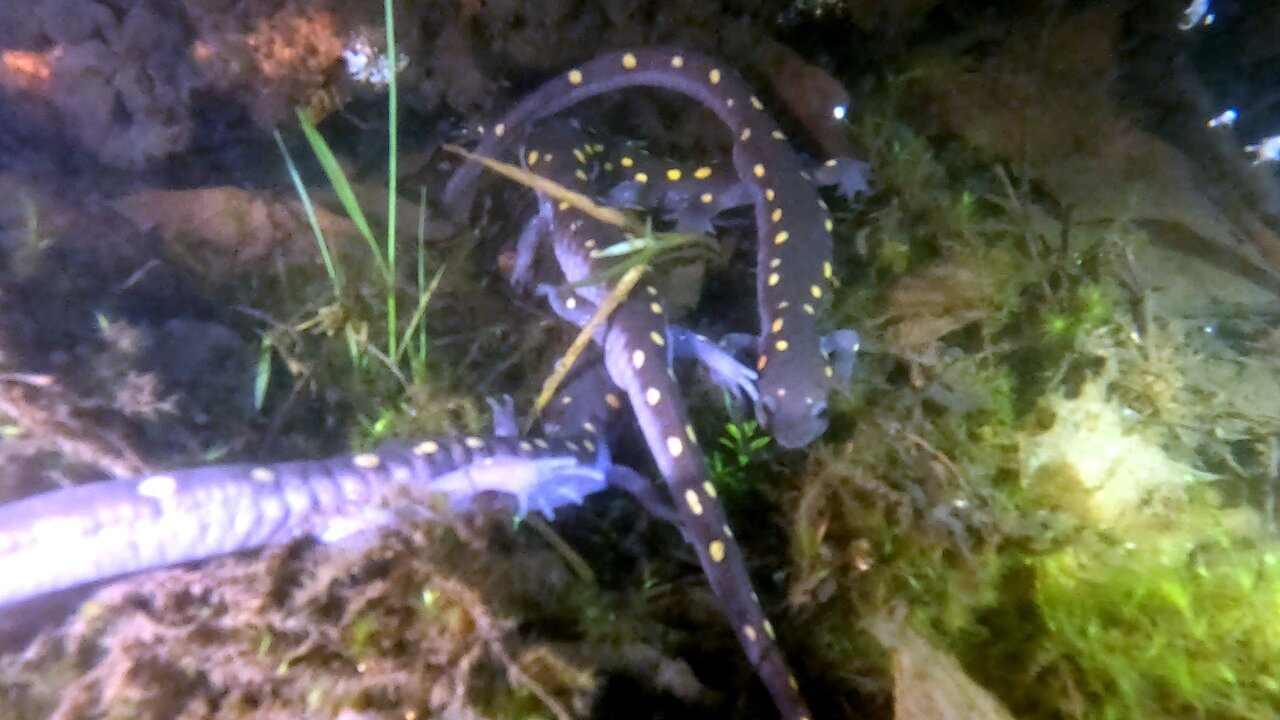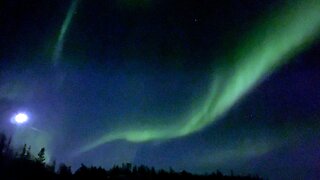Premium Only Content

Midnight snorkelers capture incredible salamander migration
Every spring, yellow-spotted salamanders migrate to vernal ponds to breed. The result is a frenzy of activity that lasts only 2-3 nights each year. It is a spectacle to behold. The salamanders make their long journey from the surrounding forest under the cover of darkness, usually after a rainfall. The males arrive at the pond first, depositing spermatophores on the leaves and branches in shallow water. The females come soon after, gathering up the spermatophores to fertilize the eggs that they are waiting to deposit.
Soon after the eggs are fertilized, the female will attach herself to a submerged plant stem or twig and she will release the eggs. The eggs are protected by a sticky, gelatinous mass that deters predators as the eggs develop for approximately 30 days. The eggs hatch into tadpoles, similar to frogs and toads. They spend their first few months in the water, breathing through gills.
Salamanders are amphibians. Once they leave the water, they spend most of their lives underground, occasionally coming out of their burrows to feed and also for breeding season in March to May each year. They are rarely seen, although they are plentiful in the forests that they inhabit.
Salamanders excrete a toxic, milky fluid when they are threatened. Salamanders are a major food source for birds, raccoons, foxes and other animals.
Salamanders feed on earthworms, spiders, slugs, snails, and other insects. They have the amazing ability to grow a new tail and new limbs if one is severed.
A salamander has the unique ability to lay two different types of egg masses. One type has a water-soluble, protein-based gel. The other type has a hydrophobic protein-based gel. This is believed to prevent predation by wood frogs. These eggs are combined with an algae that produces oxygen and removes carbon dioxide and nitrogen waste from developing embryos.
The complex relationships between organisms are only beginning to be understood. The health of our forests and our ecosystems depends on the survival of all species, no matter how small.
-
 3:22
3:22
WildCreatures
15 days ago $0.42 earnedThe breathtaking beauty of the aurora borealis revealed in Yellowknife, Canada
2.89K5 -
 2:40:15
2:40:15
Barry Cunningham
12 hours agoPRESIDENT TRUMP SIGNS NEW EXECUTIVE ORDERS AND THE EVENING NEWS!
69.8K59 -
 2:49:55
2:49:55
TimcastIRL
12 hours agoGOP Office TORCHED, Terror Suspected, Elon Says ARREST Dem Funders w/Winston Marshall | Timcast IRL
255K121 -
 1:39:42
1:39:42
Glenn Greenwald
15 hours agoMajor Escalation in Attempts to Purge U.S. Universities of Israel Critics; Who are the Israel Groups Providing Lists to the U.S. Government to Deport & Punish? | SYSTEM UPDATE #431
227K205 -
 9:21:30
9:21:30
SpartanTheDogg
18 hours agoPro Halo Player
82.7K3 -
 1:08:55
1:08:55
Donald Trump Jr.
18 hours agoGlobalist Panic & Populist Prosperity, Live with Natalie Winters & Alex Epstein | Triggered Ep229
198K158 -
 1:37:15
1:37:15
CocktailsConsoles
11 hours agoBE PART OF THE GAME!!| Death Road to Canada | Cocktails & Consoles Livestream
54.9K4 -
 1:04:29
1:04:29
BonginoReport
16 hours agoFDA Vax Pusher Needs to Look in the Mirror - Nightly Scroll w/ Hayley (Ep.16) - 03/31/2025
163K138 -
 3:27:31
3:27:31
SquallRush
1 day agoBrawlhalla Mondays!
54.8K1 -
 9:14:37
9:14:37
Misfit Electronic Gaming
15 hours ago $8.01 earned"LIVE" It's So Monday So lets Perk it up. Lets Earn Gears"Party Animals" & R.E.P.O. Who will join me????
75.5K